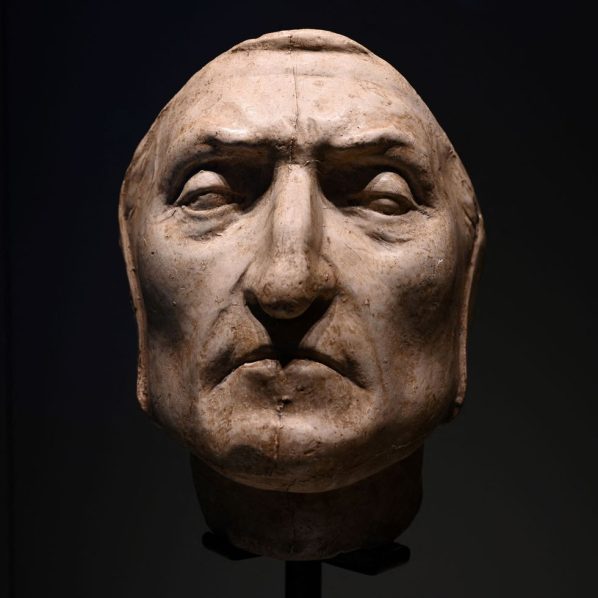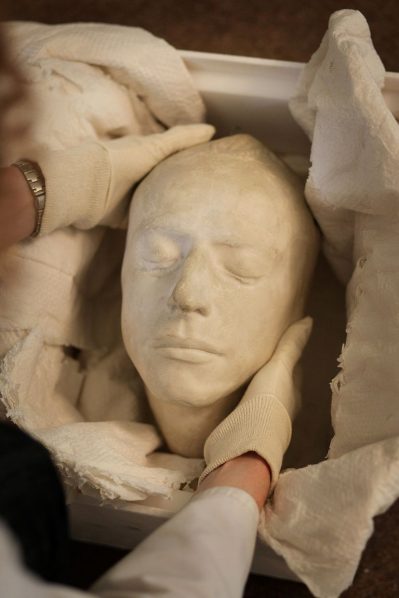
Many centuries ago, there was nothing like photos. Nothing that made humanity remember their deceased loved ones. There wasn’t anything that preserved memories of people when they were on earth. There was nothing to reignite favourite memories. So, people turned to death masks.
[ad]
What’s a death mask? It is a wax or plaster mask created to resemble a person’s face after he or she might have passed on. It is used as a perfect representation of the lifelike reminder of the person who once was.
Many cultures, throughout history, have represented loved ones, famous people or elite people after death with these masks. In France, the death mask was associated with an artistic practice closely connected with the funeral ceremonies of kings and queens in those countries. Whenever a king of France died, the court painter was summoned to the palace to take a cast of the monarch’s features even before the corpse was opened and embalmed by the court physicians and surgeons.
In ancient Egypt, royalty was mummified after death and placed in a coffin for eternity. Within the decorated coffin, on top of the wrapped face, was placed a sculpted mask of wood, clay, plaster or even beaten gold and other precious metals to represent the face of the dead, protect the face and head during burial, and guard against evil spirits. The mask also allowed the deceased’s spirit to recognise the body in the afterlife, and because the facial features of the mask were correlated to those of important gods, the wearer could travel safely to the afterlife.
The Romans also used burial masks, which were either placed over the faces of the dead or may have been worn by members of the funeral party. Roman masks may have been cast in wax directly from the faces of the dead. Among Inuits and other native peoples from the Pacific Northwest and the Arctic, burial masks were also common and were especially used for deceased shamans. With bone eyes inserted into the eyeholes, and decorated with feathers, hair, and other items, these masks were placed on the faces of the dead to prevent spirits from entering the body and reanimating it. Covering the eyeholes was thought to be important, both to keep out the spirits and perhaps, to let the deceased see.

In Siberia, masks like these were worn over the faces of the dead in many cultures to help the dead be recognised in the afterworld. Burial masks made of gold were also used in ancient China to cover the faces of dead royalty. This practice was found in the ancient kingdoms of Cambodia and Siam. Among the ancient Maya, burial masks made of jade and other precious stones were used, which would protect the deceased and ensure his survival into the afterlife. Death masks were also used on the faces of rulers at Teotihuacan and among the Olmec.
In Viking times, these masks were used to cover the faces of warriors and were made of the bones of animals such as wolves and goats. They were intended to signify his strength and virility and protect the wearer from demons after death. mask of the pharaoh Tutankhamun.
Masks like these were worn over the faces of the dead in many cultures to help the dead be recognised in the afterworld. Burial masks made of gold were also used in ancient China to cover the faces of dead royalty. This practice was found in the ancient kingdoms of Cambodia and Siam.
One mask, known as ‘L’Inconnue de la Seine,’ recorded the face of an unidentified young girl, who, around the age of 16, was found drowned in the Seine River at the Quai du Louvre in Paris around the late 1880s. Since the body showed no signs of violence, suicide was suspected. A pathologist at the Paris Morgue was so taken by her beauty that he felt compelled to make a wax-cast death mask of her face. “Her beauty was breathtaking, and she showed few signs of distress at the time of her passing. So bewitching that I knew beauty as such must be preserved,” he said.
[ad unit=2]








